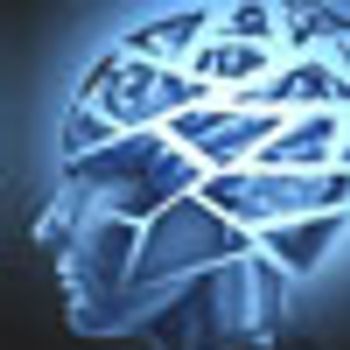
Discussing the Neuropsychiatric Outcomes After Heart Surgery study, testing the vascular hypothesis of post-coronary artery bypass graft depression.

Discussing the Neuropsychiatric Outcomes After Heart Surgery study, testing the vascular hypothesis of post-coronary artery bypass graft depression.

Lamotrigine is an important option in bipolar disorders. However, many clinicians also use it in patients with a (unipolar) depressive disorder who have not responded adequately to conventional antidepressants.

The extent to which antidepressant use during pregnancy is associated with increased risks of postnatal adaptation syndrome, persistent pulmonary hypertension in the newborn, first-trimester teratogenicity, stillbirth, and infant mortality is explored in 2 recent studies. A close up look here. . .

In our time, it seems that the number of psychiatrists who believe in a God are increasing, parallel with the decreasing influence of Freud’s ideas.

When critics of psychiatric diagnosis insist that terms like “schizophrenia” or “bipolar disorder” are inherently stigmatizing, they are unwittingly perpetuating the very prejudice they wish to end. It is time to shine a bright light on this self-fulfilling prophecy.

Outpatient psychiatry is a critical experience in becoming an independent psychiatrist.

Frame analysis can not only help us to discern the roots of such standoffs but also to conceptualize specific ways of addressing the conflicts in therapeutic language with the patient, with the goal of forging an integrated approach to treatment.

Psychological symptoms of depression in patients with diabetes are more specific to depression than their somatic counterparts.

Historically, there has been conflict between psychiatry and religion.

The humanities are a variety of academic disciplines that focus on the human condition with analytic and sometimes speculative methods. This is in contrast to the empirical methods of the natural sciences.

Preliminary evidence shows that dialectical behavior therapy may be beneficial in treating patients with bipolar disorder.

In addition to having an excellent safety profile, ECT is widely acknowledged to be the most effective acute antidepressant treatment.

Bringing the arts and humanities to psychiatry requires bringing these areas of study into our education, our research and our practice models.

Concerns are raised about DSM-5 revisions in the definition of depression. Many worry that eliminating the bereavement exception in the guidelines for the diagnosis of major depressive disorder represents a dangerous move.

A recent symposium brought together some of the nation’s leading experts to talk about promising advances in psychiatry and to address areas where progress has faltered.

Astrocytic signaling to adenosine receptors results in the robust reduction of depressive-like behaviors associated with sleep deprivation.

Major depression is a common chronic illness within the general US population. What is the approximate prevalence for MDD in the US population?

Can methylfolate play a role in the adjunctive treatment of patients with major depression? In this podcast, Rakesh Jain, MD, offers insights.

According to the CDC's latest published report, there were 38,364 suicides in the US in 2010-an average of 105 each day. Globally, an estimated 1 million suicides occur annually.

Mindfulness training is a viable treatment tool that rivals psychopharmaceutical agents for the treatment of addiction, anxiety, depression, and other psychiatric disorders.

Planck's Law of Generations: scientific change doesn't happen by changing minds, but by changing generations.

Movement abnormalities and psychiatric symptoms often overlap and exacerbate one another. Can psychopharmacological agents induce movement disorders?

A list of recent articles highlighting the complexity of psychiatric and systemic illness, both in terms of overlapping clinical presentation and in the degrees to which systemic illness and psychiatric illness affect each other.

Diabetes mellitus and depression symptoms are associated with with decreased self-care and less adherence to exercise, medications, smoking cessation, and eating a healthy diet.

The goal of this article is to improve recognition of comorbid psychiatric and movement disorders and to help the reader formulate a management strategy using a multidisciplinary approach.